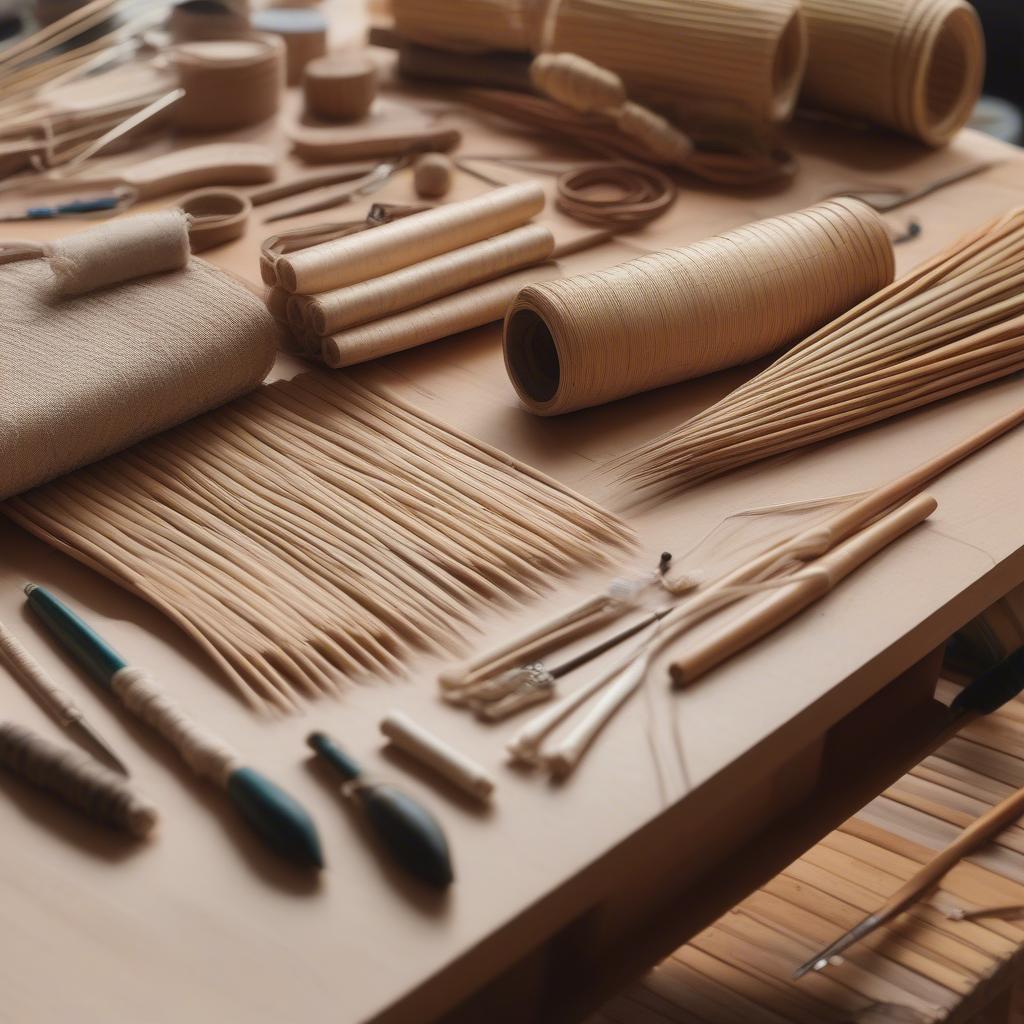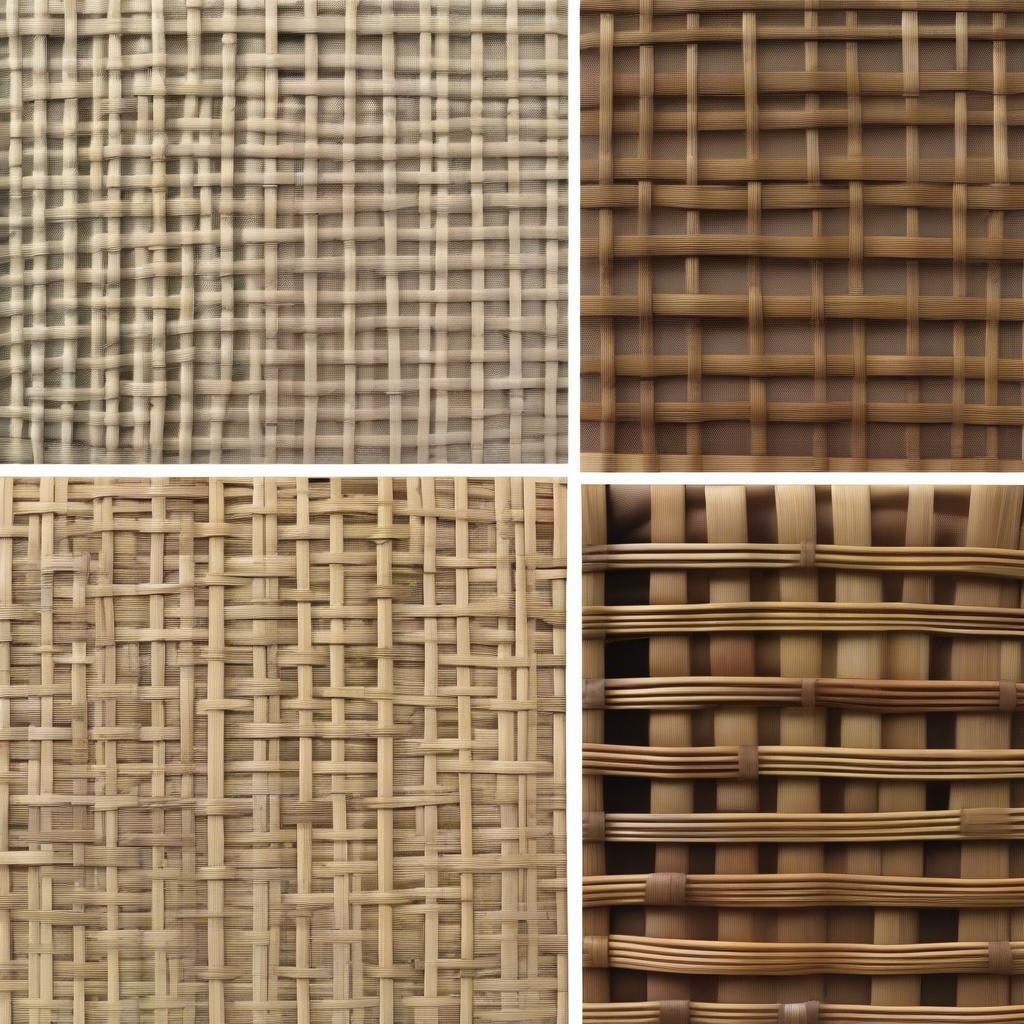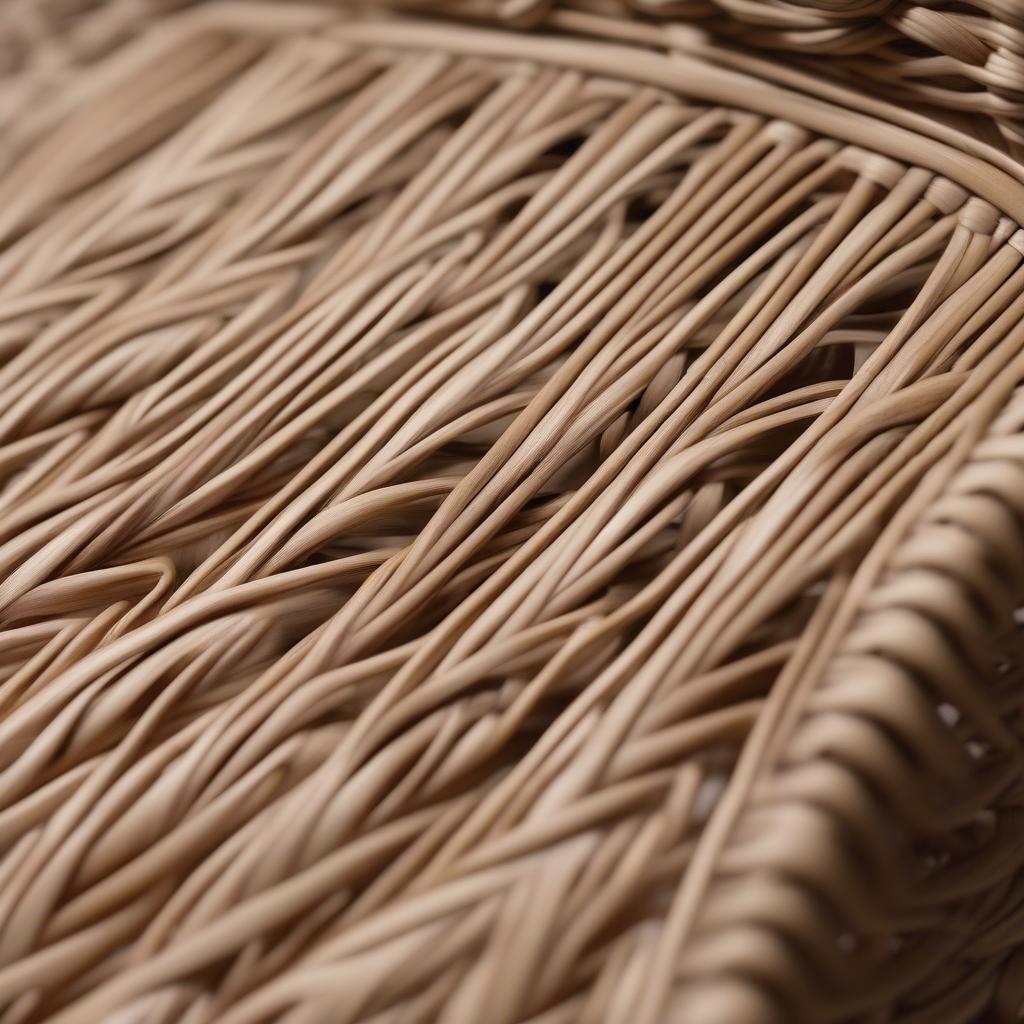Weave Chair
Rattan for Chair Seat Weaving: A Comprehensive Guide
Rattan for chair seat weaving is a popular choice for its durability, flexibility, and natural beauty. This guide explores everything you need to know about using rattan for chair seat weaving, from choosing the right materials to mastering various weaving techniques.
Understanding Rattan as a Weaving Material
Rattan is a naturally occurring vine that grows in tropical regions. Its strength, flexibility, and resistance to splitting make it an ideal material for chair seat weaving. Unlike wicker, which is a processed material, rattan is a natural, sustainable resource. This contributes to its growing popularity among environmentally conscious crafters and consumers. Choosing high-quality rattan is crucial for a successful weaving project. Look for uniform thickness, smooth texture, and minimal blemishes.
 Close-up of different types of rattan used in chair seat weaving
Close-up of different types of rattan used in chair seat weaving
Preparing Rattan for Weaving
Before you begin weaving, the rattan needs to be prepared. Soaking the rattan in warm water for about 30 minutes makes it pliable and easier to work with. This prevents it from cracking or breaking during the weaving process. After soaking, allow the rattan to dry slightly before starting your project. This allows for optimal flexibility and reduces the risk of mildew.
Popular Rattan Chair Seat Weaving Patterns
Various patterns can be achieved with rattan, ranging from simple to intricate designs.
- Open Weave: This pattern creates a breathable and lightweight seat, ideal for warm climates.
- Closed Weave: Offering a more solid and supportive surface, the closed weave is suitable for everyday use.
- Checkerboard Weave: A visually appealing pattern that adds a touch of elegance to any chair.
- Twilled Weave: This intricate weave creates a textured and durable seat.
 Examples of different rattan chair seat weaving patterns
Examples of different rattan chair seat weaving patterns
Step-by-Step Guide to Weaving a Simple Rattan Chair Seat
Let’s walk through the steps of creating a simple open weave pattern:
- Measure and Cut: Measure the chair seat frame and cut the rattan reeds accordingly.
- Weaving the Warp: Start by weaving the vertical strands (warp) across the frame.
- Weaving the Weft: Next, weave the horizontal strands (weft) over and under the warp.
- Securing the Ends: Tuck the ends of the rattan underneath the woven strands to secure them.
Tips for a Successful Rattan Weaving Project
- Use high-quality rattan for best results.
- Soak the rattan before weaving to make it pliable.
- Practice on a small sample piece before tackling a full chair seat.
- Be patient and take your time. Rattan weaving requires precision and attention to detail.
 A finished rattan chair seat woven with an intricate pattern
A finished rattan chair seat woven with an intricate pattern
Conclusion
Rattan for chair seat weaving offers a beautiful and durable solution for restoring or creating unique furniture pieces. By following these tips and exploring different weaving patterns, you can create stunning and functional chair seats. Choosing rattan for your next project brings both natural beauty and lasting quality to your handcrafted creations.
FAQ
-
How long does a rattan chair seat last? With proper care, a rattan chair seat can last for many years.
-
How do I clean a rattan chair seat? Use a damp cloth and mild soap to clean your rattan chair seat.
-
Can I paint a rattan chair seat? Yes, you can paint rattan, but it’s essential to prepare the surface properly.
-
Where can I buy rattan for chair seat weaving? Rattan can be purchased from craft stores, online retailers, and specialty suppliers.
-
What are the different types of rattan used for weaving? Common types include reed, core, and binding cane.
-
Is rattan sustainable? Yes, rattan is a fast-growing, renewable resource.
-
What tools do I need for rattan weaving? Basic tools include a weaving needle, awl, knife, and measuring tape.
Looking for more information on other weaving techniques? Check out our articles on wicker basket weaving and seagrass chair repair. For questions or assistance, please contact our 24/7 customer support hotline at +84 388 951 999 or visit our offices in Hanoi, Vietnam or Tech Avenue, Suite 12, San Francisco, CA 94105, USA.
